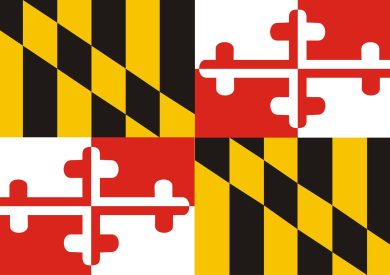
 Popular Cities For Lending in Maryland
Popular Cities For Lending in Maryland
Ellicott City
Frederick
Gaithersburg
Germantown
Glen Burnie
Rockville
Severn
Silver Spring
Towson
Waldorf
In the Maryland real estate market, grabbing properties before your competition is essential for making the best deals. Although real estate investors sometimes go the traditional route and seek bank loans, the process is anything but speedy.
When time is of the essence, waiting for the lengthy process of getting approval is not an option for most investors. Maryland hard money lenders specialize in providing hard money loans which provide quick funds to investors. These loans are for a non owner occupied property or in some cases for business purpose loans.
Maryland Hard Money Lender FAQ’S
Below are some of the most frequently asked questions we get regarding hard money loans and lenders in Maryland.
What Do Maryland Hard Money Lenders Specialize in?
Maryland hard money lenders specialize in providing short-term, creative financing for real estate investors. If you seek a conventional lender to purchase an investment property, your loan request will be based on the property’s value and your assets. Your credit score, job, and finances will be scrutinized intensely. Hard money lenders base their final loan decisions on the after-repair value. The ARV represents the potential value of a property after all repairs have been accomplished.
What are the Benefits of Maryland Hard Money Loans?
Maryland hard money loans offer advantages that traditional banks cannot. Lenders like Acamnet Financial offer a higher level of flexibility than banks. When qualifying for this type of loan, lenders do not delve too deeply into the finances of real estate investors. In most cases, simply present the property and your plans, which saves you the hassle of gathering countless financial documents.
Do Maryland Hard Money Lenders Look at my Credit Score?
One of the greatest benefits of working with Maryland hard money lenders is the lack of credit score requirements. One of the first things a bank does is check your credit score. You can get approved for a hard money loan in Maryland even if you have bad credit or poor credit, bankruptcies, and foreclosures in the past. Maryland Hard money lenders primarily care about the property you are purchasing.
What is the Interest Rate & Points for Hard Money Loans in Maryland?
Interest rates for hard money loans in Maryland are typically higher than traditional bank loans (conventional loans) because of the greater risk lenders must take on when approving loans. When searching for a hard money lender near me in Maryland, you will find average interest rate is between 8%-15%. You should also be aware that lenders sometimes charge points that are meant to offset their administrative costs. Each point represents 1% of the total loan amount. The average points lenders charge is between 1 to 3. Some lenders may charge up to 10 points. These points are due upfront or at closing, depending on the lender.
What Should I Look for in a Maryland Hard Money Lender?
There are many benefits to working with a Maryland hard money lender. You just need to make sure you are working with the right lender. You can rely on Acamnet Financial Group when you need us most. We offer reliability, consistency, experience, and support. As a real estate investor, you know the importance of grabbing the best property deals when they become available.
How can Hard Money Lenders in Maryland Help Me?
Whether you are new to real estate and real estate projects or an old pro, you know having the capital to purchase real estate is essential. Without funds, you will miss out on real estate transactions. When you partner with hard money lenders in Maryland, you will quickly get the money you need without jumping through the hoops of traditional bank lenders.
How do I get a Hard Money Loan in Maryland?
When you want a hard money loan in Maryland, begin by preparing the property information. Location, size, purchase price, after repair value, repair costs, etc. In most cases, the financing will be based on these numbers. Then, apply for a hard money loan in Maryland using this information and supply some financial information. Then, an appraisal will be ordered to assess the loan-to-value ratio, which will influence the loan amount.
How do I Refinance a Maryland Hard Money Loan?
Refinance a Maryland hard money loan will involve moving from a high interest, short term loan to a longer term, usually lower interest rate loan. Typically a conventional type of loan. When refinancing a Maryland hard money loan you will find it will have a more stringent set of guidelines. You will need to have sufficient credit and income qualifications. As the lending landscaping and regulations constantly change, you want to consult a knowledgeable conventional loan expert.

Current Real Estate Trends In Maryland (2024)
The real estate market in Maryland has seen a mixed performance lately. Median sale prices have gone up somewhat while the number of sold homes has dropped significantly. Mortgage rates have also risen significantly, resulting in reduced buyer activity.
However, there has been a notable increase in available listings and housing inventory. Homes in Maryland are also remaining on the market for longer than in prior years.
Despite these difficulties, specialists think the housing market in Maryland won’t crash and will be more resilient than other states. Factors affecting the market include decreasing buyer demand, affordability issues, limited housing inventory, lack of new listings, and stringent lending standards.
On the whole, the housing market in Maryland is likely to experience a slowdown, but not a major decrease in home prices. This article provides an overview of the market, analyzing market statistics and performance, and making predictions for the future.
Maryland Housing Market Overview
The Maryland housing market is currently experiencing a slowdown. This is evident from the decrease in the quantity of homes sold and a slight increase in median sale prices compared to the previous year. Statistics reveal that the median sale price has risen by 1.4% year-on-year. However, on the other hand, the number of homes sold has fallen by 32.3% year-on-year.
These figures indicate that buyer demand is declining, which could potentially lead to affordability issues in the area.
Market Statistics and Performance
The Maryland real estate market is showing signs of slowing down, as median home prices remain on the rise and the number of homes sold has fallen significantly in the past year. These statistics provide a comprehensive look at the current state of the market:
- Average median home price: $405,500, a slight increase over the past year
- Home sales down by 32.3%
- Average rent price: $1,023
- Pending sales: 9,780 listings
The data reflects a continuing trend of rising home prices, but a decrease in the overall number of homes sold. This suggests a slow-down in the real estate market, with fewer homes being sold despite the uptick in prices.
Predictions for the Future
The Maryland housing market is showing signs of a slowdown, with the number of homes sold dropping significantly and average median home prices rising slightly.
There are several contributing factors to the current market conditions, such as growing mortgage rates, affordability difficulties, and a low housing inventory. This makes the market difficult for both buyers and sellers.
Going forward, it is likely that these conditions will continue, making it necessary for buyers and sellers to adjust their strategies accordingly.
Sources
https://www.noradarealestate.com/blog/maryland-housing-market/
https://www.houzeo.com/blog/maryland-real-estate-market/
https://www.thefinelivinggroup.com/blog/maryland-real-estate-market-analysis-latest-trends-statistics-and-factors/

All About Maryland
Maryland, situated in the Mid-Atlantic region of the United States, is characterized by its small land area and high population density. Geographically, it is bordered by Virginia, West Virginia, Washington, D.C., Pennsylvania, Delaware, and the Atlantic Ocean.
Baltimore, renowned for its seaport and railroad networks, is the state’s largest city, while Annapolis serves as its capital.
Maryland has a noteworthy colonial history, initially established as a haven for Catholics and promoting coexistence among diverse religious sects. The state’s early history is deeply intertwined with Native American tribes, particularly the Algonquian peoples.
Despite the American Civil War, Maryland remained loyal to the Union and witnessed significant population growth and economic development. Its highly diversified economy encompasses manufacturing, retail services, and biotechnology.
Maryland is recognized for its multiculturalism, with a substantial African American population and residents originating from Africa, Asia, Central America, and the Caribbean.
The state’s distinct geography, varied climates, topographical features, and rich history contribute to its unique identity.
Maryland Overview
Maryland, located in the Mid-Atlantic region of the United States, has a rich history and cultural heritage. It is known for its unique geography and diverse population.
With a land area of 12,407 square miles (32,130 km), Maryland is the eighth-smallest state by land area but the fifth-most densely populated state.
Maryland is home to the largest city, Baltimore, and the capital, Annapolis. Baltimore is renowned for its seaport and railroad networks, while Annapolis is located on the north shore of the Potomac River.
Early settlements in Maryland were clustered around rivers and waterways, with the economy heavily relying on plantation and tobacco cultivation.
Maryland’s boundaries were settled in 1760 after a border dispute with Pennsylvania. This early settlement and exploration laid the foundation for Maryland’s development and its significant role in the events leading up to the American Revolution.
Early Settlement and Exploration
Founded by George Calvert, 1st Baron Baltimore, the colony of Maryland emerged as a haven for religious tolerance and played a significant role in early American settlements and exploration.
In 1632, Charles I of England granted Lord Baltimore a colonial charter, and the colony was named after Henrietta Maria, the queen of England, Scotland, and Ireland. Maryland was one of the original Thirteen Colonies of England.
Early settlements in Maryland were clustered around rivers and waterways, with the economy heavily based on plantation and tobacco cultivation. Indentured servants and enslaved Africans were imported for cheap labor.
Maryland’s boundaries were settled in 1760 after a border dispute with Pennsylvania. Maryland also actively participated in the events leading up to the American Revolution.
Transitioning into the subsequent section, religious diversity and tolerance played a crucial role in Maryland’s early history.
Religious Diversity and Tolerance
Religious diversity and tolerance shaped the colony’s early years, as Lord Baltimore envisioned a place where different religious sects could coexist.
Maryland was founded as a haven for Catholics facing persecution in England. However, religious strife was everyday in the early years, as various religious groups, including Protestants and Puritans, clashed over their beliefs.
In 1649, the Act Concerning Religion was passed, penalizing religious discrimination and promoting religious freedom. Despite this, Catholics remained a minority in the colony, although in more significant numbers than in other English colonies.
Diverse religious communities influenced the development of Maryland’s society and culture. This foundation of religious tolerance laid the groundwork for Maryland’s colonial history and an eventual quest for independence.
Colonial History and Independence
Establishing a colony in the early 17th century led to the development of a unique society and culture in what is now a populous and economically diverse state. Maryland, founded by George Calvert, 1st Baron Baltimore, was envisioned as a haven for religious tolerance. Its colonial history as one of the original Thirteen Colonies of England shaped its early years.
Plantation and tobacco cultivation formed the backbone of the economy, with indentured servants and enslaved Africans providing cheap labor. Maryland played an active role in the events leading up to the American Revolution. The state’s boundaries were settled in 1760 after a border dispute with Pennsylvania.
This colonial history laid the foundation for Maryland’s subsequent involvement in the Civil War and the eventual abolition of slavery.
Civil War and Abolition
During the Civil War, Maryland’s stance on slavery was divided, and its strategic location gave it a significant role in the conflict.
While Maryland remained in the Union, it had strong sympathies for the Confederacy due to its Southern cultural ties and economic reliance on slavery. Governor Thomas Holliday Hicks suspended the state legislature to prevent secession, and President Abraham Lincoln took action to ensure a pro-union government in Maryland.
The Baltimore riot of 1861 marked the first bloodshed of the Civil War, as pro-Confederate mobs clashed with Union soldiers. The Battle of Antietam, fought in Maryland in 1862, was a turning point and a strategic Union victory.
Maryland abolished slavery in 1864, influenced by changing economic factors and revolutionary ideals.


 Popular Cities For Lending in Maryland
Popular Cities For Lending in Maryland